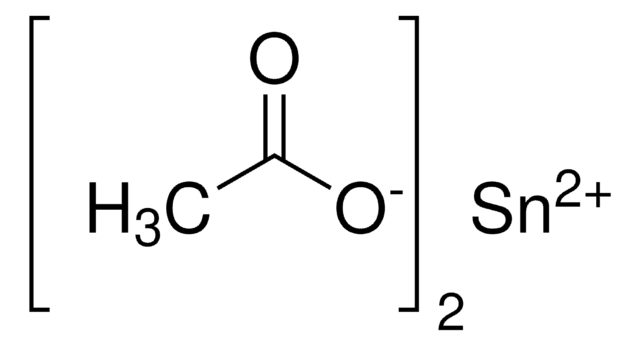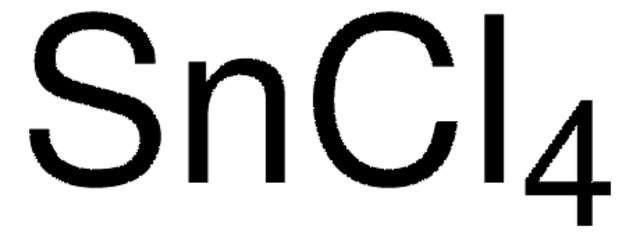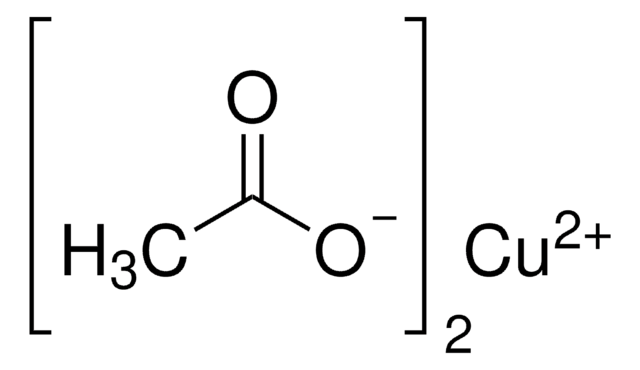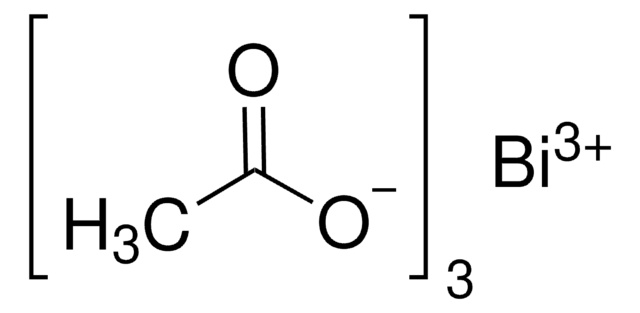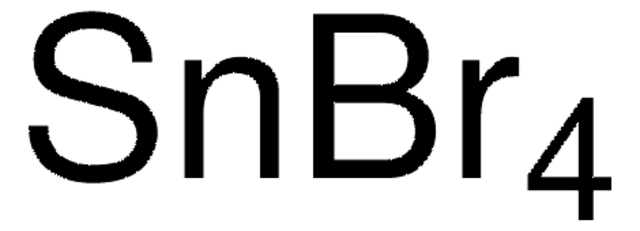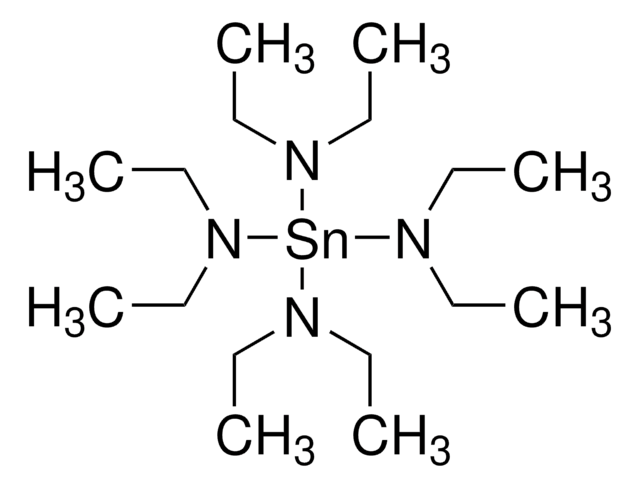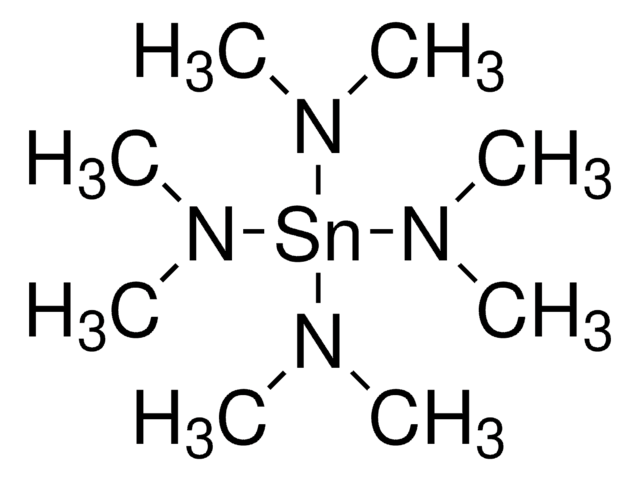345172
Tin(IV) acetate
Synonyme(s) :
Stannic Acetate, Tetraacetoxytin, Tin(4+) Diethanoate, Tin(4+) tetraacetate
About This Item
Produits recommandés
Forme
solid
Niveau de qualité
Composition
Sn, 31.4-35.5% gravimetric
Pertinence de la réaction
core: tin
Pf
232-233 °C (lit.)
Chaîne SMILES
CC(=O)O[Sn](OC(C)=O)(OC(C)=O)OC(C)=O
InChI
1S/4C2H4O2.Sn/c4*1-2(3)4;/h4*1H3,(H,3,4);/q;;;;+4/p-4
Clé InChI
YJGJRYWNNHUESM-UHFFFAOYSA-J
Description générale
Application
- As a reducing agent to synthesize silver nanoparticles for conductive inks for printed electronics.
- As a precursor to prepare tin oxide nanopowder for gas sensors.
Mention d'avertissement
Warning
Mentions de danger
Conseils de prudence
Classification des risques
Acute Tox. 4 Dermal - Acute Tox. 4 Inhalation - Acute Tox. 4 Oral
Code de la classe de stockage
6.1C - Combustible acute toxic Cat.3 / toxic compounds or compounds which causing chronic effects
Classe de danger pour l'eau (WGK)
WGK 3
Point d'éclair (°F)
Not applicable
Point d'éclair (°C)
Not applicable
Équipement de protection individuelle
dust mask type N95 (US), Eyeshields, Gloves
Faites votre choix parmi les versions les plus récentes :
Déjà en possession de ce produit ?
Retrouvez la documentation relative aux produits que vous avez récemment achetés dans la Bibliothèque de documents.
Les clients ont également consulté
Notre équipe de scientifiques dispose d'une expérience dans tous les secteurs de la recherche, notamment en sciences de la vie, science des matériaux, synthèse chimique, chromatographie, analyse et dans de nombreux autres domaines..
Contacter notre Service technique